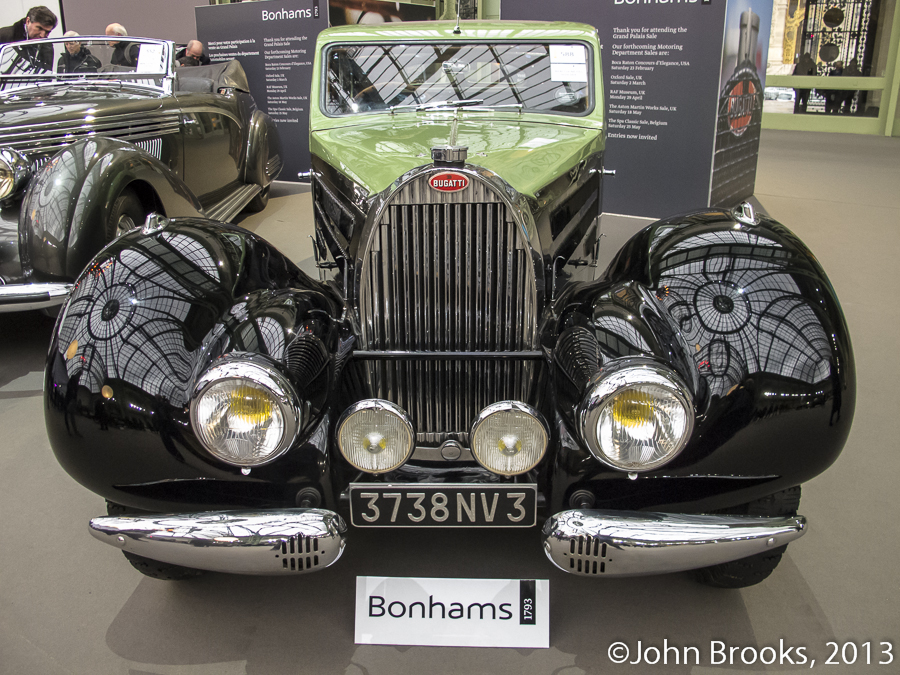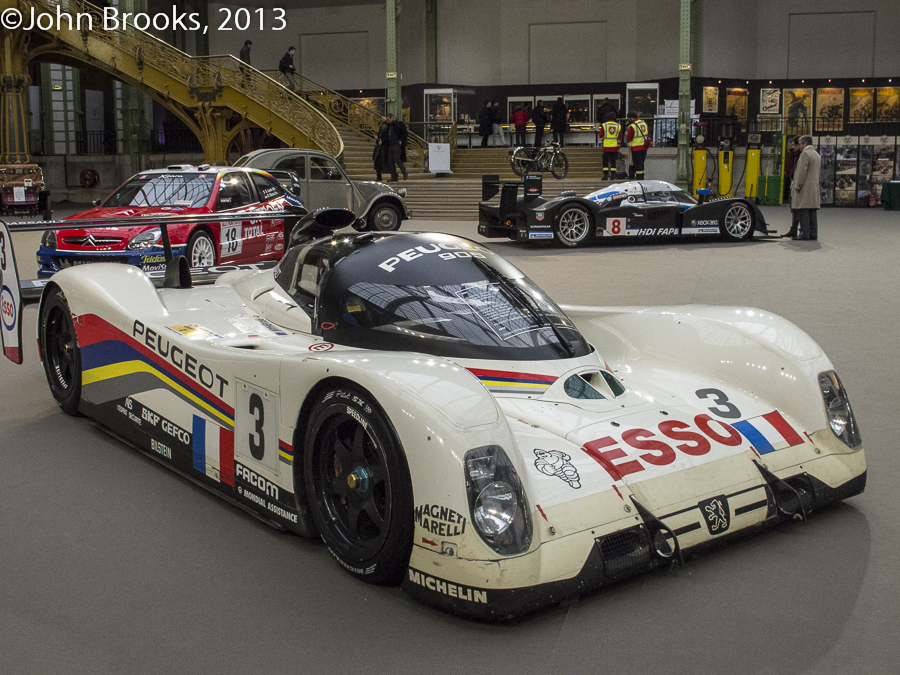Bonhams recent sale in Paris was also the scene of a tribute to ‘A Century of French Automobile Genius’. Held in the majestic location of the Grand Palais, just off the Champs Elysees, the auction house, with support from Peugeot and Citroën, assembled a collection of around 30 cars that illustrated the major contribution that the French have made to the development of the automobile.
The setting of the Grand Palais for such an exhibition is of course extremely apposite, given that this was the site of the Paris Salon which was held there for many years until the show outgrew the hall.
As with any collection of fine automobiles they are all equal, but inevitably some are more equal than others and while I recognise the quality of the very early cars, some dating back to the 19th Century, my own preferences are more modern. Star of the show as far I could see was the two tone Bugatti Type 57 C Coupé Special dating back to 1938.
About as original as is possible, right down to the wiring loom and electrical components, the car was used by Ettore Bugatti and Jean-Pierre Wimille prior to World War Two. After the Fall of France, Grand Prix ace and Le Mans winner for Bugatti, Robert Benoist, prudently hid the vehicle to ensure its safety. Benoist, recruited into the SOE to organise and support the Resistance, did not survive himself, being captured twice by the Gestapo, eventually he was murdered at Buchenwald in 1944.
The Type 57 was returned to Bugatti at the end of hostilities and it was subsequently used as a test bed for new ideas and components which explains the Lockheed Hydraulic brakes. It was, and is, utterly beautiful and desirable, well we can all dream.
From the lofty expression of automotive art that is the Bugatti, I was drawn to the familiar functional shape of the Peugeot 905, this example being the actual car that Geoff Brabham, Eric Hélary and Christophe Bouchut drove to victory in the 1993 Le Mans 24 Hours. The Peugeots swept all before them in that last gasp of the Group C era.
With power in abundance from a 3.5 litre V10 engine and staggering amounts of downforce these were some of the fastest race cars ever built, at Silverstone in 1992 the Peugeot would have qualified on the second row of the British Grand Prix, and this from a car designed to race for 24 hours.
It was interesting to compare this thinly disguised Grand Prix car with the Peugeot 908 HDi FAP, a diesel powered endurance racer that, in 2009, routed the much vaunted Audi Sport team. This example was the second placed car at Le Mans that year, narrowly beaten by their sister car.
Much more in touch with the real world was the Citroën 2CV, introduced to an expectant public in 1948 who were clamouring for simple, inexpensive solutions to their motoring needs. With nearly four million examples made in the following decade, this quirky looking car came to symbolise the French automobile industry.
Another Citroën with a record of success is the World Rally Championship Xsara WRC which racked up win after win in the hands of Sebastian Loeb, cementing the French manufacturer’s domination of top flight rallying in this century.
Back to the time when the French car industry seemed to be an offshoot of the Louvre, so elegant were the designs, is the Delage D8 Torpédo, built in 1931. The Delage factory at Courbevoie was the most modern of its time and its produce was snapped up by celebrities and Royalty alike, the looks have weathered the test of time.
From the early days of motoring, the De Dion Tricycle and the Peugeot Type 17 illustrate the birth of the French motor industry. Other absolute classics on hand were a Bugatti Type 54 Grand Prix car, a Talbot Lago T26 Cabriolet and two more icons from Citroën, a 1953 Traction Avant and a DS19 Décapotable. The latter was originally an adaptation by Henri Chapron that the factory eventually adopted for their own.
Only on for two days during the Bonhams Sale, the exhibition flowered brightly and briefly, certainly worth an hour or two in Paris.
John Brooks, February 2013













